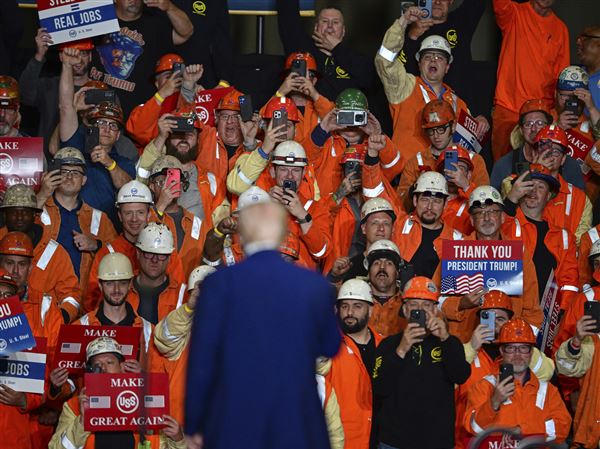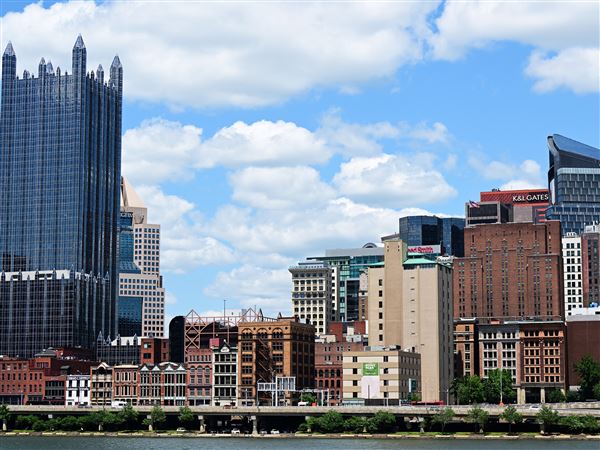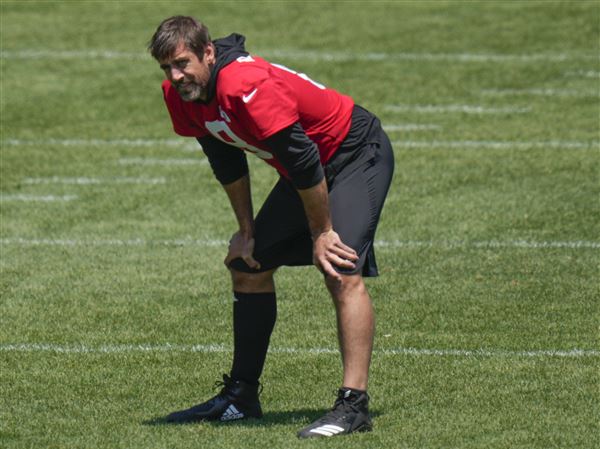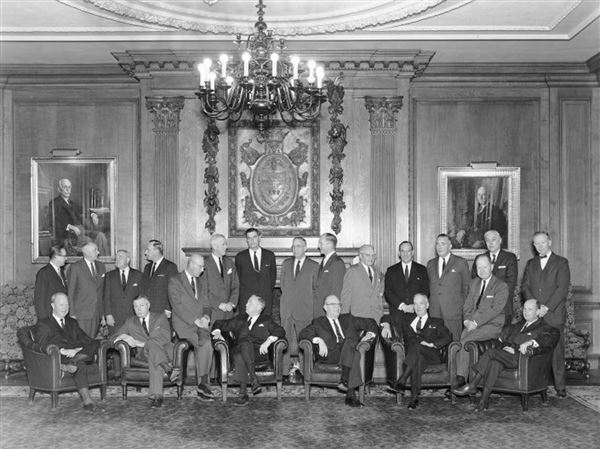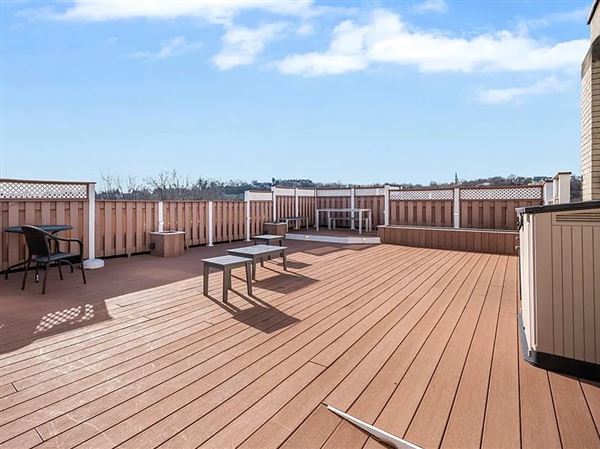Twenty-five years ago, the shell of a Jones & Laughlin steel mill greeted visitors driving into Pittsburgh through the Squirrel Hill tunnels. The empty building was a sign of a city near its nadir, searching for a path that would lead it beyond its identity as a rust belt capital.
"When the '80s came, you had a sense of civic leaders flailing around, trying to find a way. And who can blame them? The scale of this was unfathomable," said Edward Muller, director of the urban studies program at the University of Pittsburgh.
"No one has an appreciation of how bad things were," said John G. Craig Jr., editor of the Pittsburgh Post-Gazette from 1977 to 2003 and now president of Pittsburgh Regional Indicators, which compiles data comparing Pittsburgh to other like-sized U.S. cities.
Mr. Craig noted that Detroit's 17.1 percent unemployment rate in June, as troubling as it is, doesn't compare with the 28 percent unemployment that Allegheny County's neighbors in Beaver County experienced in 1983 following the steel industry's collapse.
Pittsburgh was a city in transition in many ways in 1984 -- Andre Previn left the Pittsburgh Symphony, Franco Harris was packing for Seattle and Terry Bradshaw was setting off on his life's work as a high-profile broadcaster and celebrity.
Yet it was also just one year from Rand McNally's Places Rate Almanac naming Pittsburgh America's Most Livable City, a designation that drew snickers similar to those emanating from the White House press corps this spring when Press Secretary Robert Gibbs announced the G-20 economic summit would come to Pittsburgh.
"I think Pittsburgh bubbled up because, even in the face of what's happened with the economy, Pittsburgh didn't buckle under," said Doris Carson Williams, co-chair for the Pittsburgh Summit and chairwoman of VisitPittsburgh.
"We were able to sustain ourselves but, more importantly, look what we transformed into."
Most would agree the region is still not where it wants to be -- Mr. Craig notes that there are still too many children living in poverty and too much abandoned housing -- but the changes for the better are both unmistakable and surprising.
Could anyone envision in 1984 that Pittsburgh would become one of the leading U.S. cities for green buildings, ranked 11th in the latest listing from the U.S. Green Building Council?
"In many ways, we've been quite successful," said Joel Tarr, a professor of history and policy at Carnegie Mellon University.
"There are things going on that are really quite impressive," citing strong neighborhoods and environmental initiatives such as the renewal of brownfields.
Through good fortune as much as good planning, Pittsburgh has risen to become a center of education, finance, biotech, healthcare, green technology and other industries, even if the smoky city image lingers among those who've never seen the place.
Experts such as Dr. Muller, Mr. Craig, Dr. Tarr and others point to some key factors contributing to Pittsburgh's re-emergence:
Among those were the critical role played by local foundations that provided seed money and matching grants, and the growing strength and influence of the universities and the medical community.
They also specifically cite the vision and efforts of two mayors: Richard Caliguiri, who helped meld public and private resources into a single force to lift the community; and Tom Murphy, who launched the city down a green path that has revived the waterfronts and sprouted bike trails.
There was also a bit of luck.
In the early 1980s, the region was so panicked about creating jobs that the waterfronts might have been reindustrialized instead of beautified, if someone had the means, said Dr. Muller.
Obviously and tragically, many families were hurt by the massive loss of jobs but, said Mr. Craig, "It's basically a consequence of all this hollowing and cleaning out that Pittsburgh became more livable."
Here's what's transpired over 25 years: Near the ground where J&L stood beside the Parkway East, a gleaming set of office buildings now stand where scientists push the knowledge frontiers in fields such as regenerative medicine.
A loose affiliation of hospitals in Oakland has become one of the leading medical centers in the U.S., reaching out into the international community with transplantation and cancer treatment know-how. There's no more prominent display of the city's transition than the placement of the University of Pittsburgh Medical Center's initials atop the 64-story U.S. Steel Tower.
Across the Monongahela River, another J&L steel mill has been replaced and rejuvenated with a bustling South Side community where tattoo shops do business down the street from a Cheesecake Factory, and railroad-turned-bike trails lure the physically fit during the day while the nightlife runs late every weekend.
Moving back across the river, the transformation can be seen from the new hockey arena forming in Uptown to Fifth Avenue Place's drill bit contribution to Downtown's skyline.
In 1984, the overturned bottle cap known as Three Rivers Stadium anchored the North Shore where today there are newly constructed homes for the city's baseball and football teams, a science center for kids and a casino for the grown-ups.
The city has had its share of problems and is still dealing with the fallout. Most livable or not, many had to leave over the years, for jobs or wanderlust or both. Opening up opportunities for new grads remains a challenge.
"We've lost a whole demographic of the population," said Dr. Tarr. Mr. Craig pointed out in an essay published in the Washington Post this year that Pittsburgh is the only major urban region in America to consistently show population decline for nearly 40 years now.
The shiny casino and sparkling skyline can divert attention from intractable poverty in some neighborhoods, Mr. Craig said, but the region has old wealth, natural resources and "great natural beauty" to help move forward.
"What you have to recognize is that these things take time. It's a very slow process."
First Published: September 22, 2009, 4:00 a.m.
